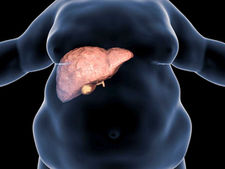
Scintigraphy
What is scintigraphy?
Scintigraphy is a nuclear medicine method performed by administering medication orally or intravenously to diagnose various diseases such as various types of cancer, endocrine and neurological disorders, and heart diseases, to determine their severity, and to molecularly visualize the disease occurring in organs and tissues.
For which diseases is the scintigraphy method used?
Thyroid in Endocrinology; goiter diagnosis and treatment follow-up Parathyroid; lesion detection Labeled Leukocyte in Infection Bone Marrow Labeled Immunoglobulins with Nanocolloid Liver-Spleen Scintigraphy in the Gastrointestinal System Gastroesophageal Reflux Scintigraphy Esophageal transit study Hepatobiliary Scintigraphy Gastrointestinal Bleeding Study Salivary Gland Scintigraphy Gastric Emptying Time Kidney Cortex Scintigraphy in the Genitourinary System Dynamic Kidney Scintigraphy Static Kidney Scintigraphy X-ray Kidney Scintigraphy with Captopril Testicular Scintigraphy Myocardial Perfusion Scintigraphy in the Cardiovascular System ; heart muscle viability, heart failure, Myocardial Sympathetic Innervation Scintigraphy MUGA; detection of whole or regional movement disorders of the heart. Three-Phase Bone Scintigraphy in the Musculoskeletal System. Whole Body Bone Scintigraphy; investigating the extent of cancer spread to the bones and the causes of pain. Bone Marrow Scintigraphy. Lung perfusion scintigraphy in the Pulmonary (Respiratory) System; probability in the diagnosis of pulmonary embolism, evaluation of lung functions before lung cancer surgery. Lung perfusion/ventilation scintigraphy. Lung quantitative perfusion scintigraphy. Brain Perfusion Scintigraphy in the Central Nervous System; Providing diagnosis in the development of clinical findings in cases with epilepsy, tumors, blood circulation failure, Alzheimer's risk.
How is scintigraphy done?
People performing scintigraphy must be experts and professionals in their fields. It is applied by nuclear medicine technologists who know how the devices are used and how they are applied to the patient. Scintigraphy is also known as gamma scanning, and in this method, images are taken through cameras and transferred to the computer. The images are processed on the computer, and then more precise and clear information about the structures of the organs is obtained. Images taken with the scintigraphy method can be 2 or 3 dimensional. Highly effective imaging systems produce very effective results in diagnosing and treating many diseases. In the scintigraphy method, it is necessary to wear a special apron in order to perform comfortable imaging. The nurse gives the special medicine to the patient through various routes (oral, vein). The specific medicine is expected to reach the damaged area in the body. The radiation waves emitted by the gamma camera are processed. The patient must be motionless. It is said that it should change direction whenever desired. The data is examined by the doctor and if the desired data is not obtained, the procedure is repeated.
What are the Types of Scintigraphy?
Types of scintigraphy are named according to the tissue and organ on which the scintigraphy method is applied. These types are as follows: Heart scintigraphy; Diseases in the vessels and muscles of the heart are detected. It can be applied in two steps. Firstly, movements in the blood after stress are observed. Second, blood movements are observed after people rest. And the data obtained as a result of these two steps are compared. Thyroid scintigraphy; This method is used for the exact image of thyroid and goiter disease detected in the tests after a doctor's examination. Bone scintigraphy; This method is used for problems such as bending of bones, calcification and cancer. Lung scintigraphy; Scintigraphy is performed to view the condition of the air sacs. In addition, scintigraphy is performed to determine whether there is blood inside the lung and on its surface. Kidney scintigraphy; Both physical and functional problems in the kidney are displayed.
What are the Side Effects of the Scintigraphy Method?
After the scintigraphy process is completed, the patient can continue his life in the same way where he left off. There are no side effects afterwards. Radiation is at the lowest level in scintigraphy imaging. Healthy organs and tissues are not affected by this radiation. The elimination time of the special medicine given to the patient's body is very short. It is important that the particular medicine does not cause sensitivity for the person. In order for the imaging to be successful, allergy etc. Sensitivity events should not occur. Its occurrence is quite rare and is almost temporary.
FOR INFORMATION AND APPOINTMENT, YOU CAN LEAVE YOUR NUMBER OR ASK OUR EXPERTS
YOU CAN LEAVE YOUR NUMBER FOR INFORMATION AND APPOINTMENT AND ASK QUESTIONS TO OUR EXPERTS



-04.png)
-06.png)
-05.png)
-08.png)
-07.png)























